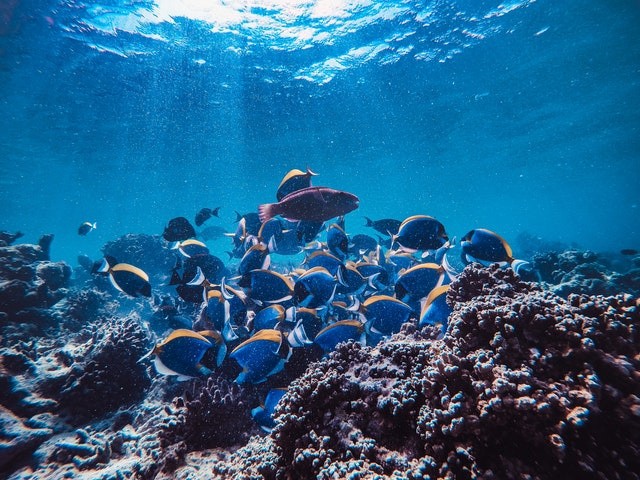The Weddell Seafloor was littered with 60 million icefish eggs discovered by scientists aboard an icebreaker in Antarctica. Every nursery is guarded by a ghost parent, and together they form the world's largest known breeding colony of fish.
The journal Current Biology published this findings on January 13th.

Discovery of the World's Largest Breeding Colony of Fish
Alfred Wegener Institute Autun Purser was on the bridge of the RV Polarstern (a German icebreaker) when Lilian Böhringer - his graduate student - who was keeping a close watch on the camera feed called up to the bridge.
On a mission to keep tabs on the Weddell Sea's seafloor, the ship's commander, Dr. Wolfgang Böhringer, was keeping an eye on a one-ton camera towing behind it called the Ocean Floor Monitoring and Bathymetry System (OFOBS).
Using the camera stream, Böhringer was able to spot fish nests pockmarking the seafloor around every 10 inches (25 centimeters) in all directions and covering an area of 93 square miles (240 square kilometers).
According to Science Alert, icefish created the small basins in the seafloor mud, which are native to the cold southern oceans, to lay their eggs. They are the only animals known to date whose blood contains no hemoglobin at all. As a result, icefish are referred to as "white-blooded."
Assessing the Nesting Area
After the first discovery, the team performed several passes over the spot, towing the camera at a deeper depth in order to obtain a more complete picture of the colony.
Nesting icefish are typically seen in large groups, but Purser estimates that the most he has ever observed was forty nests or something similar. A comprehensive assessment of the nesting area has predicted that there are 60 million nests there. And it hasn't happened like this before, Purser remarked.
In the majority of these nests, a single adult fish kept watch over 1,700 eggs on average.
3.6 degrees Fahrenheit (2 degrees Celsius) above the surrounding water was the reason for the researchers' presence in this approximate location.
"Our aim was to see how carbon goes from the surface to the seafloor and what communities are in the water column," said Purser.
Microzooplankton was discovered near the surface of an upwelling column of water, where young icefish feed after hatching before returning to the bottom where they spawn. Icefish were expected to be found in the upwelling due to the abundance of food.
Weddell seals are likely to feast on the large icefish colony because the area is strewn with fish carcasses, indicating that the colony is an important part of the local ecosystem.

Efforts to Make the Colony a Marine Protected Area
After discovering the colony, the Intergovernmental Commission for the Conservation of Antarctic Marine Living Resources (CCAMLR) is trying to make it a marine protected area.
The icefish colony, strangely, appears to have a clear boundary. Like penguin colonies, Purser said: "The colony went from very, very dense to nothing, much like penguin colonies, It was like a line in the sand."
Two cameras were left behind by the crew of the Polarstern before they left the area to investigate the delicate balance of this unique environment. In April 2022, Purser intends to return to the Weddell Sea.
"There's certainly lots to be discovered," said Purser.
For more news, updates about fishes and similar topics don't forget to follow Nature World News!
© 2025 NatureWorldNews.com All rights reserved. Do not reproduce without permission.





